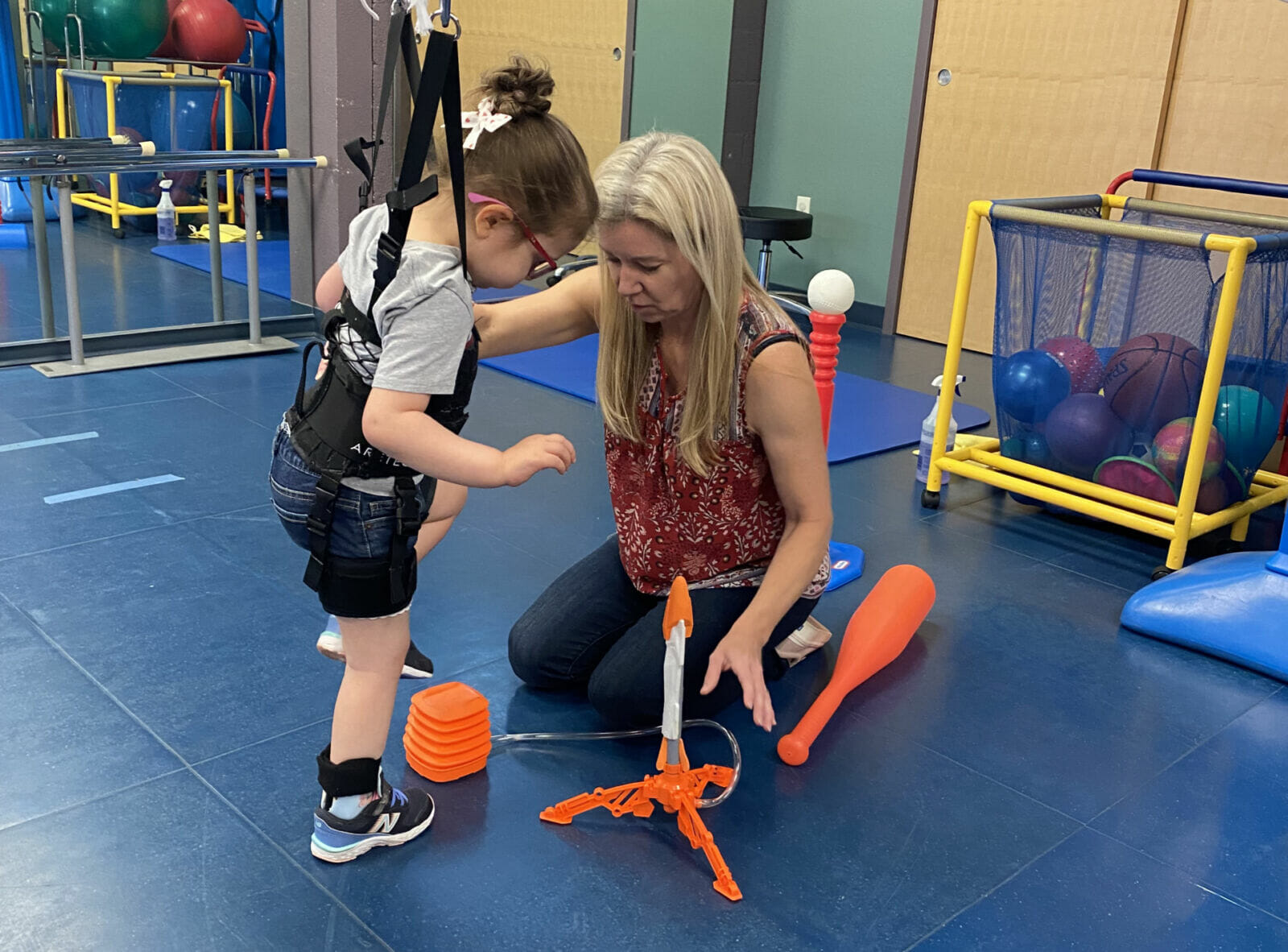In September 2022, the UCP Laura Dozer Center in North Phoenix received a remarkable addition. As the result of a close to $300,000 investment from United Cerebral Palsy (UCP) of Central Arizona, the facility was able to install the Aretech ZeroG Gait and Balance System. The innovative technology used by UCP utilizes a robotic weight support system mounted on an overhead track. The user is fitted with a harness that attaches to the overhead unit, enabling patients to safely experience rehabilitative activities — like practicing walking, balancing and climbing stairs.
LEARN MORE: AZ Big 100: 50 Arizona businesses to watch in 2023
“The way it’s designed, it has sensors, and we can set it to be able to actually lift weight up off the child for them to be able to work on these skills,” explains Valerie Pieraccini, director of Therapy Programs and the Early Learning Center, UCP of Central Arizona.
The Aretech robotic-assisted technology is a game-changer not only for UCP, but also for many local Arizona families who can benefit from its therapeutic and rehabilitative capabilities. According to UCP, “cerebral palsy is the most common motor disorder in childhood; one out of 345 children are born with the disorder each year.” Additionally, 41% of children with cerebral palsy are limited in their ability to crawl, walk, run and play. The ZeroG Gait and Balance System opens the door for these children to safely experience these activities.
“If you can get a child up and out, and be able to have some type of mobility, there is a whole benefit of simply being able to move around your own house or be able to administer self-care,” Pieraccini says. “But even thinking about getting a child to be able to be out in their community, to be able to participate in adaptive sports really moves the child’s needle forward in their independence and ability to participate in life and in their community.”
For several children, the Aretech ZeroG Gait and Balance System is the first time they’ve ever experienced being hands-free — without having to rely upon the aid of a walker or cane. According to Pieraccini, it’s also the first time many children have been able to hold a parent’s hand, play and move freely without an assistive device.
“One of our first little guys [to use the ZeroG system] — Sebastian, one of our ambassadors — got on it, and he kind of looked around because he’s used to walking with walker,” Pieraccini says. “His mom put a Superman cape on him, because it was a big deal, and he exclaimed, ‘I’m walking! And I’m Superman. I am Superman, walking.’
“The story of ZeroG,” Pieraccini continues, “is embedded in the bigger picture of really realizing we need to carry the torch of our name. My co-chair, Dr. Michael Kruer from Phoenix Children’s Hospital, who’s a leading geneticist in our nation and has walked this journey with me for a long time, whispered in my ear at the ZeroG ribbon cutting, ‘I’m very excited for Arizona. I am very excited for what we can do and how we can change it for these kids.’”




